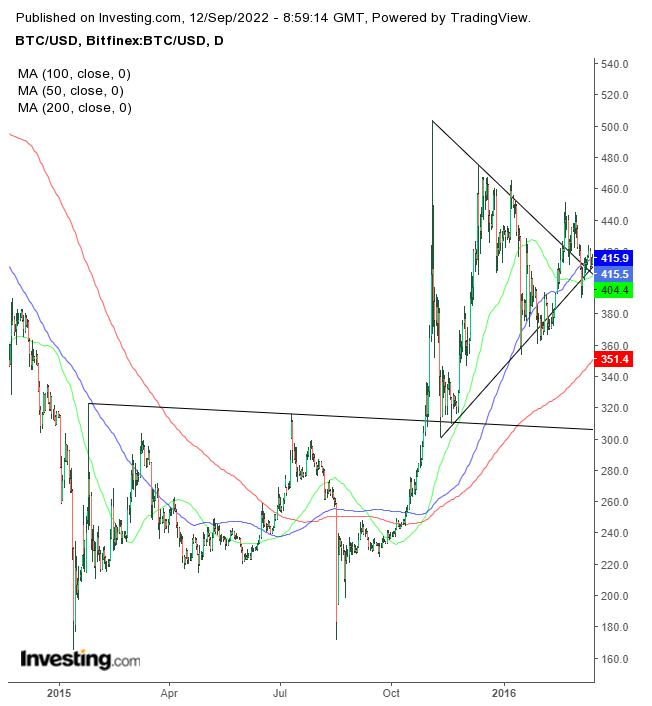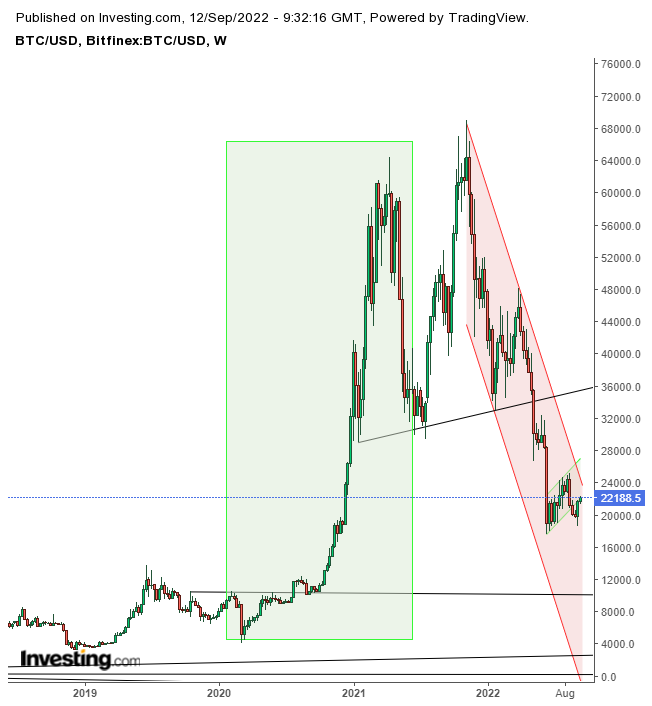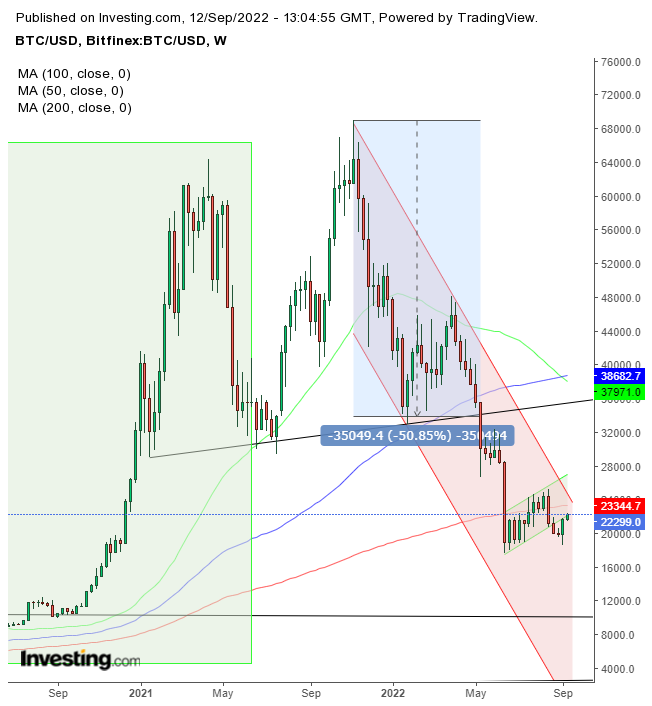Bitcoin is up for the sixth straight day in its longest winning streak since March 29, when it rose for eight consecutive days.
Crypto trader, il Capo Of Crypto tweeted last week that while the price of BTC was falling there was a pattern of buying interest that was picking apart supply pockets. Il Capo predicted that when this entity stopped accumulating, the cryptocurrency would bounce, and it certainly did, by 19%.
The author of Layered Money, Nik Bhatia and analyst at the Bitcoin Layer, Joe Consorti argue that "dormant supply peaks are springboards for upwards price action."
This is an argument favored by crypto traders that dormancy in the price of Bitcoin equates to a bottom. They cite the examples of 2016 and 2020 when Bitcoin was quiet and then the price exploded.
I disagree with them and here's why:

In 2016, Bitcoin's bottom set the stage for a large symmetrical triangle, followed by a continued uptrend.

In 2020, BTC bottomed, from where it catapulted to its Apr. 14, 2021, $64,374 all-time high.

In complete contrast to the previous two examples, which followed bottoms, today BTC is after a top, and not just any top, but the largest in its history—$35,000.
Moreover, the price finds resistance below the rising channel, bowing to the more significant falling channel. Note, the price fell below the 200 weekly moving average (WMA) for the second time since March 2020. That was the first time on record since Sept. 11, 2017.
However, the weekly price closed slightly below the gauge and bounced back the following week. Currently, Bitcoin is below the 200 WMA for the fifth straight week. Also, the 50 WMA fell below the 100 WMA, even amid this rally.
When Bitcoin bottoms, I will be the first one to say so. According to the principles of technical analysis, the digital coin is on a trajectory much lower, a path it's been on since January. The price is retesting the broken rising channel, near the top of the falling channel, providing a potentially ideal entry, at least from a risk-reward perspective.
Remember, you should trade with a plan that incorporates your timing, budget, and temperament. If you don't know how to compose one, below is a generic example so that you practice learning about yourself. The principles of technical analysis are statistical-based resumptions. There is no way of knowing whether this market will follow statistics. Therefore, before you enter the trade, close your eyes and imagine it lost. If you can't handle that, don't enter the trade. The longer you trade consistently, the better your overall trading should become.
Trading Strategies
Conservative traders should wait for a fresh low below June 8 and short a corrective rally demonstrating resistance.
Moderate traders would short upon evidence of resistance at these levels.
Aggressive traders could short now.
Trade Sample
- Entry: $22,300
- Stop-Loss: $23,300
- Risk: $1,000
- Target: $19,300
- Reward: $3,000
- Risk: Reward Ratio: 1:3
Disclaimer: The author currently does not own any of the securities mentioned in this article.
